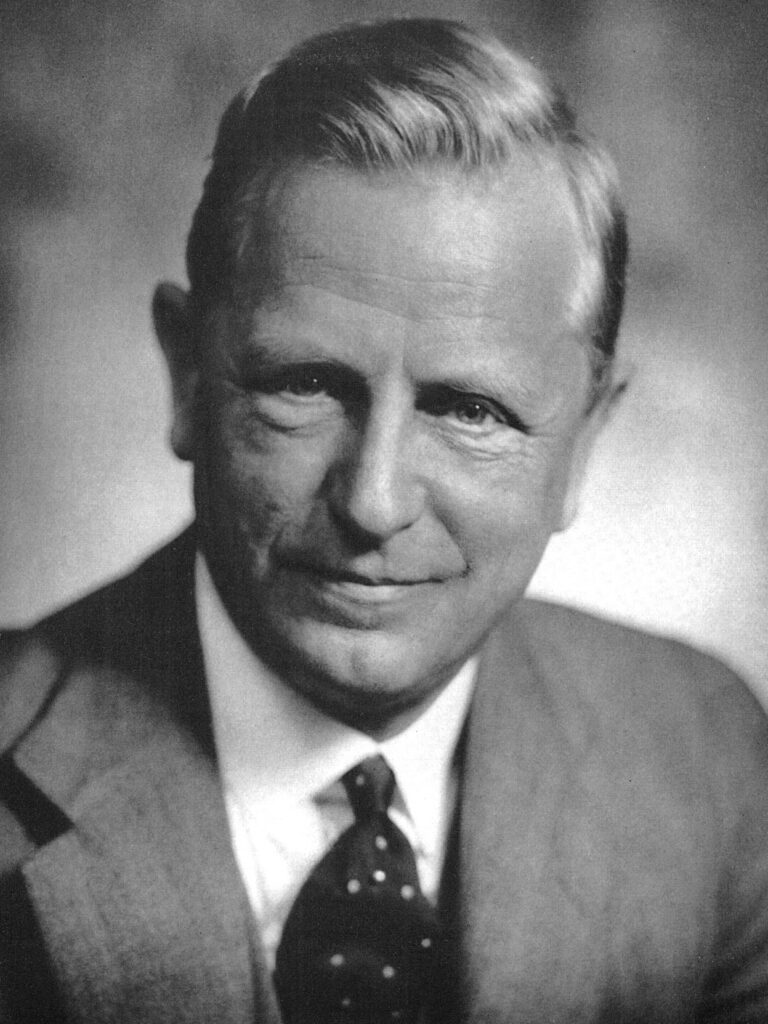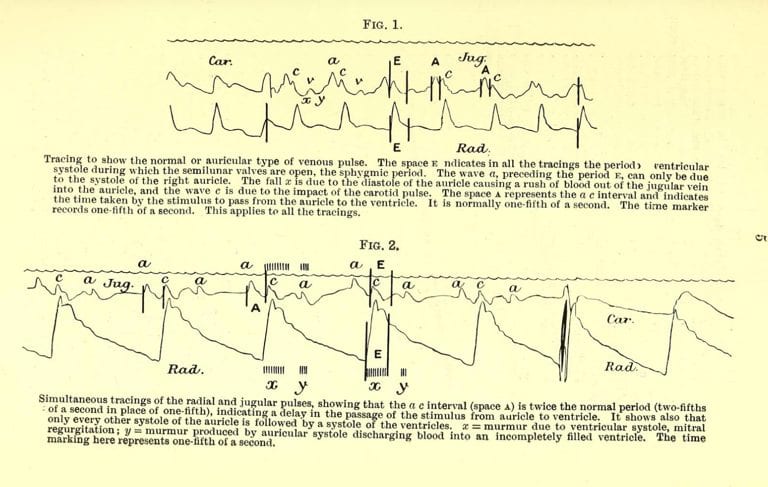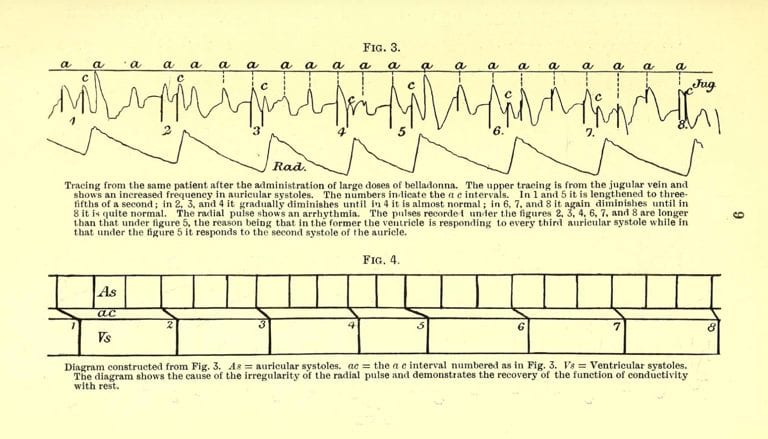John Hay

John Hay (1873-1959) was an English physician and cardiologist.
Hay was a pioneer cardiologist, best known for his early description of what is now termed Mobitz type II second-degree atrioventricular (AV) block. Born in Birkenhead, England, he was educated at the Liverpool Institute and University College Liverpool, then a constituent of the Victoria University of Manchester. After obtaining his medical qualifications in 1895–96 and an MD in 1901, Hay embarked on a distinguished clinical and academic career.
In 1906, Hay published a seminal case report in The Lancet describing a form of AV block characterised by intermittent dropped ventricular beats with constant conduction intervals (type II second-degree AV block). This work, achieved without electrocardiography but using kymographic tracings of arterial and jugular pulses, was later acknowledged by Wenckebach (1906) and validated by Mobitz in 1924. Hay also provided one of the earliest pathological correlations in AV conduction block (1905), and published widely on arrhythmias, paroxysmal tachycardia, and coronary thrombosis.
Throughout his career, Hay held numerous influential roles. He was assistant physician and later full physician to the Liverpool Royal Infirmary, founded its first heart department, and served with distinction in the RAMC during the First World War. He became Professor of Medicine at the University of Liverpool (1924–1934), served on the Council of the Royal College of Physicians, and was a founding member and later chairman of both the Cardiac Club and its successor, the British Cardiac Society. His Bradshaw (1923), St. Cyres (1933), and Strickland Goodall (1936) lectures reflected his enduring influence on British cardiology.
Beyond medicine, Hay was a skilled violinist, artist, and beekeeper, known for his charisma, warmth, and extraordinary teaching. His artistic talents found expression in watercolours, caricatures, and hand-drawn Christmas cards. After retirement, he lived in the Lake District, where he remained intellectually and socially active until his death at Bowness-on-Windermere in 1959.
Biography
- Born November 25, 1873 in Birkenhead, England
- 1895 – Conjoint diploma in Medicine (MRCS, LRCP)
- 1896 – Graduated M.B., Ch.B. from the University of Manchester.
- 1900–1903 – Served as medical tutor and registrar at Liverpool Royal Infirmary.
- 1901 – MD, Victoria University of Manchester; published on A-V bundle pathology in patient with heart block
- 1904 – Appointed to staff of Stanley Hospital; also served at Hospital for Consumption and Diseases of the Chest.
- 1905 – Published paper on bradycardia in BMJ.
- 1906 – Assistant physician to Liverpool Royal Infirmary; Published landmark paper in Lancet describing a form of second-degree AV block (Mobitz Type II).
- 1906-1913 Editor of the Liverpool Medico-Chirurgical Journal
- 1907 – Six months post-graduate study under Wenckebach at Freiburg. Returned to England – Founding member of the Association of Physicians; Assistant Physician to Liverpool Royal Infirmary
- 1914 – Founded the Heart Clinic at Liverpool Royal Infirmary
- 1914–1918 – Served in WWI with the Royal Army Medical Corps (RAMC); rose to Lieutenant-Colonel; regional adviser in medicine and cardiology.
- 1922 – Founding member of the Cardiac Club (renamed the British Cardiac Society in 1937)
- 1923 – Delivered Bradshaw Lecture on angina pectoris.
- 1924–1934 Held part-time Chair of Medicine at University of Liverpool.
- 1928 – Chairman of the Cardiac Club, also in 1932 and 1948
- 1930–1932 – Served on the Council of the Royal College of Physicians.
- 1937 – Retired from Chair of Medicine; British Cardiac Society formed from Cardiac Club.
- 1941 – Presented last scientific paper on treatment of coronary thrombosis.
- 1948 – Served as President of the Association of Physicians and Chairman of the British Cardiac Society.
- 1952 – Elected Honorary Member of British Cardiac Society.
- Died April 21, 1959 in Bowness-on-Windermere aged 85
Notable as the many academic distinctions were that came to him during his long life, his greatest achievement was the friendly warmth and youthful sincerity of his personality.
Lancet 1959
Medical Eponyms
Second-degree Atrioventricular block
- Mobitz Classification; (1924)
- Mobitz type I (Wenckebach) (1899)
- Mobitz type II (Hay) (1906)
1906 – Hay kymographically recorded simultaneous jugular venous and radial arterial pulses of a 65-year-old man with a slow pulse. He observed that the a-to-c intervals of the jugular venous waves remained constant until an a wave occurred that was not followed by the c wave or a radial pulse. The pause was equal to 2 atrial pulse-wave intervals


1906 – Wenckebach ** acknowledged Hay’s report, and suggested that the pauses found in Hay’s patient were the result of both abnormal AV conduction and abnormal ventricular excitability. [Archiv für Physiologie 1906:332]
**Hay had also spent six month’s studying with Wenckebach at Freiburg.
1924 – Woldemar Mobitz reported ECG correlations of the abnormal jugular wave findings as originally described by Wenckebach and Hay, and classified the AV block into two types
Controversies
Regarding date of death of John Hay: They have been recorded as March 21, 1959 (Munks Roll); 23rd April 23, 1959 (Lancet) and April 21 1959 (Clinical cardiology). The England & Wales, National Probate Calendar (Index of Wills and Administrations), 1858-1995 states April 21, 1959
Major Publications
- Hay J. Remarks on the pathology of bradycardia. Br Med J. 1905;2(2338):1034–1036
- Hay J. Bradycardia and cardiac arrhythmia produced by depression of certain of the functions of the heart. Lancet 1906;167(4299):139-143
- Hay J, Moore SA. Stokes-Adams disease and cardiac arrhythmia. Lancet 1906;168(4341):1271-1276
- Hay J. Paroxysmal tachycardia. Edinburgh Medical Journal 1907;21:40-58
- Hay J. Graphic methods in heart disease. 1909
- Hay J. The vagaries of the auricles. Liverpool medico-chirurgical journal 1913;33:88-100
- Hay J. Two cases of auricular flutter. Lancet 1913;182(4701):986-989
- Hay J. Prognosis in patients presenting rapid action of the heart. Lancet 1921;198(5119):750-753
- Hay J. The Bradshaw Lecture On angina pectoris: some points in prognosis. Delivered before the Royal College of Physicians of London. Br Med J. 1923 Nov 24;2(3282):957-62.
- Hay J. The action of quinidine in the treatment of heart disease. Based on the experiences of certain members of the Cardiac Club. Lancet 1924;204(5272):543-545
- Hay J. The thyrotoxic heart (The first Strickland Goodall Lecture at the Society of Apothecaries of London). Lancet 1936;228(5911):1377
- Hay J. The Ultimate Prognosis of Coronary Occlusion. Proc R Soc Med. 1934 Dec; 28(2): 129–140
References
Biography
- Obituary. John Hay. Br Med J 1959;1:1190
- Campbell M, Jones EW. John Hay. Br Heart J. 1959 Oct;21(4):573-7.
- Obituary. John Hay. Lancet 1959;1:273(7079):946-947
- Biography: John Hay. RCP Inspiring Physicians
Eponymous terms
- Cowan J. Some notes on the Cardiac Club. Br Heart J. 1939 Jan; 1(1): 97–104.
- Bramwell C. John Hay and the founders of the Cardiac Club. Br Heart J I965;27:849-855
- Langendorf R, Pick A. Atrioventricular block, type II (Mobitz) its nature and clinical significance. Circulation 1968;38:819-821
- Upshaw CB, Silverman ME. John Hay: discoverer of type II atrioventricular block. Clin Cardiol. 2000 Nov;23(11):869-71.
- Barold SS, Lüderitz B. John Hay and the earliest description of type II second-degree atrioventricular block. Am J Cardiol. 2001 Jun 15;87(12):1433-5.
- Silverman ME, Upshaw CB Jr, Lange HW. Woldemar Mobitz and His 1924 Classification of Second-Degree Atrioventricular Block. Circulation. 2004 Aug 31;110(9):1162-7
- Cadogan M. History of the Electrocardiogram. LITFL
- Cadogan M. History of Second-degree Atrioventricular block. LITFL
Eponym
the person behind the name
BA MA (Oxon) MBChB (Edin) FACEM FFSEM. Emergency physician, Sir Charles Gairdner Hospital. Passion for rugby; medical history; medical education; and asynchronous learning #FOAMed evangelist. Co-founder and CTO of Life in the Fast lane | On Call: Principles and Protocol 4e| Eponyms | Books |
